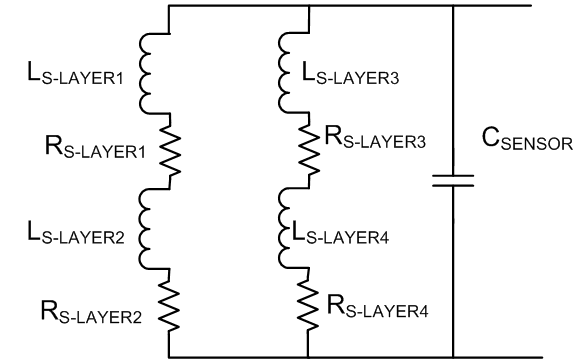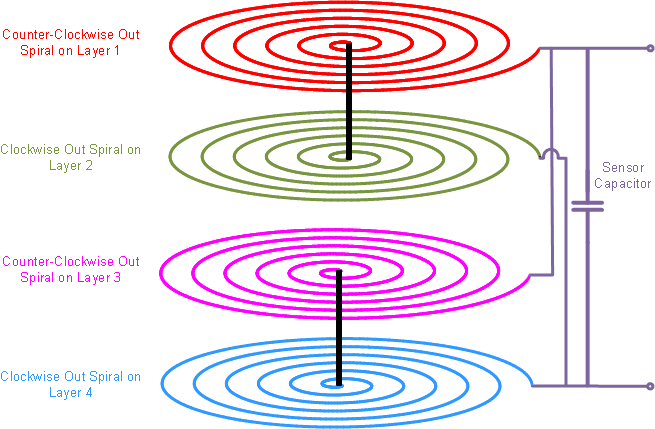SNOA930C March 2015 – May 2021 LDC0851 , LDC1001 , LDC1001-Q1 , LDC1041 , LDC1051 , LDC1101 , LDC1312 , LDC1312-Q1 , LDC1314 , LDC1314-Q1 , LDC1612 , LDC1612-Q1 , LDC1614 , LDC1614-Q1 , LDC2112 , LDC2114 , LDC3114 , LDC3114-Q1
2.3.2 Multi-Layer Parallel Inductor
Minimizing the RS is necessary to obtain the highest resolution RP measurements. This also improves the L measurements for the LDC161x and LDC131x devices. With four or more layers users can start using the parallel coil structure shown in Figure 2-9 and Figure 2-10 to lower RS. This design may be useful for some applications which need to optimize RP measurements.
 Figure 2-9 Multi-layer Parallel Coil Schematic
Figure 2-9 Multi-layer Parallel Coil Schematic Figure 2-10 Multi-layer Parallel Inductor
Figure 2-10 Multi-layer Parallel Inductor